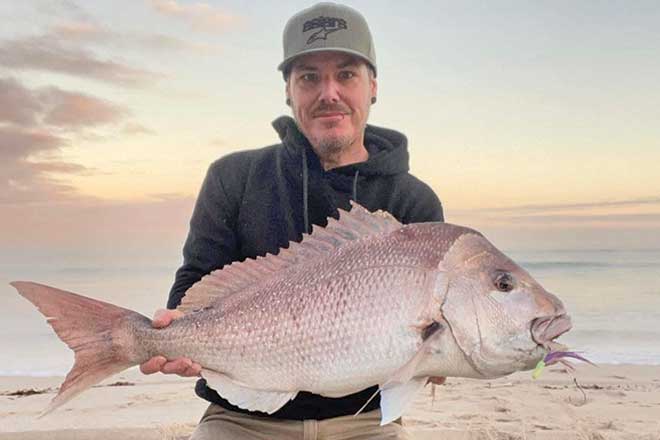Ahh yes, the age-old debate of what is the ‘best’ hook to use and what brand has the best hooks.
This month, we’re talking about finding a balance between strength and sharpness – to get the performance on point… literally.
It’s very easy to focus on the weakness of a hook once it’s failed to do a job it was never appropriate for – such as an unexpected larger amberjack when fishing for snapper or a donkey cod that came out of nowhere while fishing for pearl perch.
The truth is, you should get what you paid for – if the hook is made of quality steel and treated according to the job it was intended for.
If you can warp a soft hook with your hands, that’s generally a sign it’ll let you down in what could be one of your finest moments.
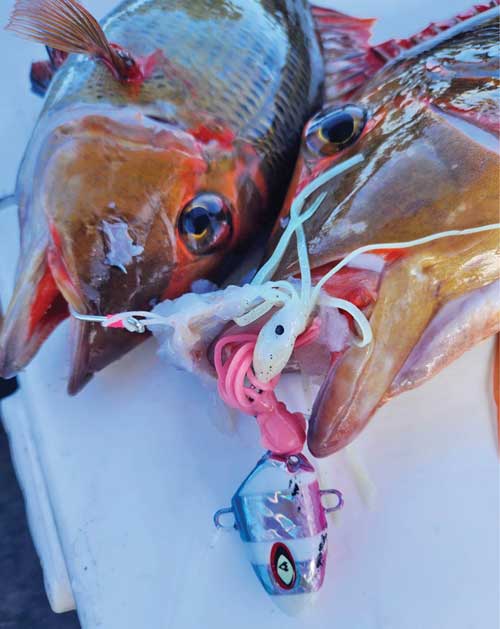
Usually, steel is enhanced with carbon, anti-rust treated and forged to create a stronger structure and harder exterior.
Depending on the target or style of fishing, these are great.
As an example, live bait hooks have a small profile though are thick enough to withstand blistering runs and unpredictable force at close quarters on larger fish.
However, these may not be the best of hooks for smaller finnicky fish, where a needle-sharp hook will ultimately result in a higher hook-up ratio.
In southeast Queensland waters, it can occasionally be frustrating trying to find the hook that’s right for you on the day, so before you gear up, it may help to ask a couple of the following questions.
What are the target species?
Let’s use coral trout as an example.
A hard-hitting and hard-fighting species that generally doesn’t ask too many questions when taking a bait.
Preferring smaller vulnerable targets or snatching another fish’s meal before hunting down their own.
These fish don’t have the ability to properly mush a bait up quickly before shallowing, nor do they have huge bucket-mouths capable of swallowing in one go anything that gets too close.
A species that predominantly thrives in coral, surrounding ledges, reefs and bommies.
Considering what I know about the species tells me the relevant hook exposure, which puts me at an advantage.
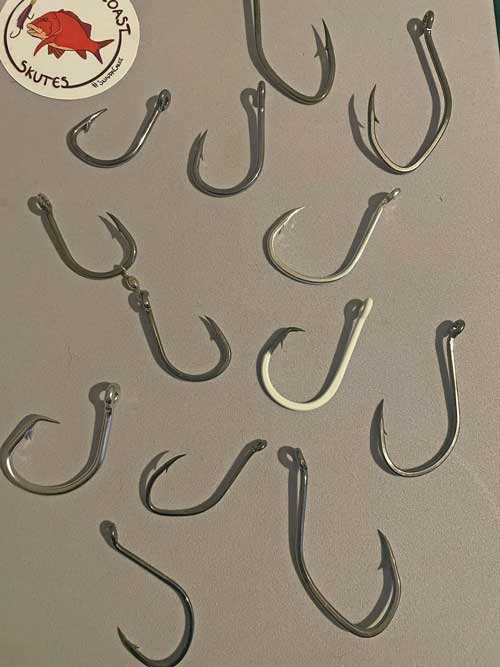
And therefore, a hook large enough to get past coral trout lips into tougher flesh for a better hook-up is key to dragging them up off the bottom.
An offset beak-style hook will no doubt slay in this situation, provided you have the strength sorted.
However, too much exposure can lead to a greater risk of snags.
Softer bait that will inevitably get mashed don’t need huge hooks to achieve a solid hook-up.
What depth and bait?
Coral trout can easily extend their mouths to engulf a bait, including big slab bait that they’ll run for cover with.
Strips of hussar, small squid, whiting frames and pilchard are very effective when rigged properly.
Trout can be very talented when it comes to spitting a hook or rejecting a bait if you can’t properly set hooks quickly enough.
Shallow trout use coral for cover and will always bolt for it once hooked.
Deeper trout hang around harder rugged ground yet are more likely to explore open areas to track down a meal.
Again, taking what I know of this species into account, fish shallow water where feedback is instant and reaction times are quicker, along with engagement to pull them out of the reef, especially with braid.
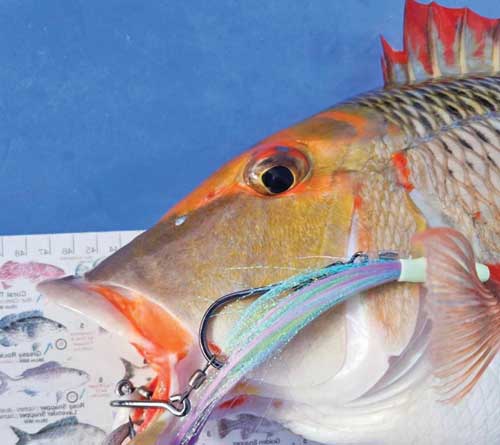
Occasionally, a slightly stronger hook with less of a point can mean less chances of the points getting a burr after the first few contacts with coral or penetrating a jawline.
Too much hook exposure can lead to snags if you’re fishing a bait hard on the bottom or drifting over reefs.
Two 8/0 live bait hooks snelled or twin gang hooks are killer when paired with an 8 or 10 ball sinker.
Any heavier, think about a single dropper rig with a decent lead.
Larger bait will require a bit of hook exposure or longer hook configurations.
Particularly if you’re geared up to handle bigger fish that – to be in with a chance of landing them – demand a bit of strength.
Remember to add a flasher to get longevity out of your bait and draw a harder strike when the bite is quiet.
When pickers smash a bait before the trout that circle the outside come in, it’s pretty much only the flasher swimming that the trout will scoff.
Larger bait with work best as you go deeper – it’s effort versus reward out there.
Unlike the thicker hooks in the shallows, it’s a better idea to drop your gauge down and focus on penetration.
As an example, snelled 8/0 octopus beaks with smaller barbs are deadly in twos or threes.
Alternatively, 6/0 quad gangs are a good option but can be a little clunky compared to a newer-styled triple assist set-up – such as the well-developed SnappaSlappa that allows for easier baiting, flexible hook placement and higher hook-up rates thanks to the savage points and wider gape.
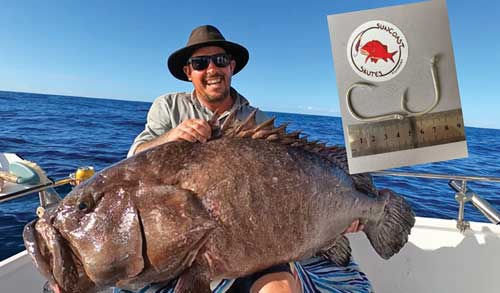
Quality or quantity?
Finally, and often most importantly, are you chasing quality mixed bags alongside your feed of trout over quantity?
When hoping for big by-catch, the key is giving careful consideration to the largest by-catch likely.
Taking into account what hooks and terminal tackle will be required to cope with the pressure put on your gear and the strain that fish will put on the business end is crucial.
Sharper hooks are likely to need maintenance between every few fish or replaced if the points bend over.
At the end of the day, the value of an extra one or two fish is by far more prized than the cost of a hook.
The only consideration is to not go too hard and risk failure or pulling hooks due to a smaller barb.
While stronger hooks will get the job done and the points will last longer, at the same time they will make you work harder when it comes to capitalising on enquiries from smaller fish – resulting in less fish to take home.
From Suncoast Skutes, take care out there and tight lines.
 Bush ‘n Beach Fishing Magazine Location reports & tips for fishing, boating, camping, kayaking, 4WDing in Queensland and Northern NSW
Bush ‘n Beach Fishing Magazine Location reports & tips for fishing, boating, camping, kayaking, 4WDing in Queensland and Northern NSW

